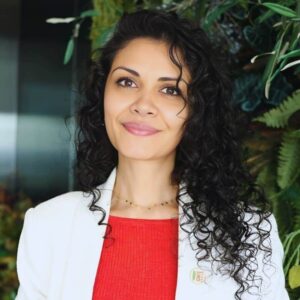Table of Contents
Toggle“Why do I always end up here?”
That was the question she whispered, almost too softly to hear.
She was a radiant woman in her mid-thirties. On paper, she had it all—beauty, brilliance, and a thriving career. Financial independence? Check. Warm personality? Absolutely. But one thing remained painfully elusive: a healthy romantic relationship.
She said, “I’m not getting any younger. My friends are getting married, having children… I want that too. But I just can’t seem to find the right guy. What’s wrong with me?”
We began to peel back the layers of her life. She mapped out her past relationships, the patterns, personalities, even the energy dynamics (yes, including sexual ones). When she looked at what she had written, her face drained of color.
“It’s the same story,” she said. “Different man, different body… but the same pain. It’s like reliving a nightmare over and over. I feel cursed.”
That moment wasn’t a breakdown; it was a breakthrough.
It was the beginning of her journey to understand her attachment style, a journey that shifted the focus from finding the right partner to healing the relationship she had with herself.
Attachment Theory: The Blueprint Beneath Our Bonds
When it comes to relationships, romantic or otherwise, we often search for answers in all the wrong places. We look for patterns in the surface-level traits of people we date, blaming timing, chemistry, or “bad luck.” But the truth is often hidden deep in the subconscious, in the emotional blueprint formed during our earliest relationships.
This blueprint is what psychologists call attachment theory, a framework pioneered by British psychiatrist John Bowlby, who said:
“I regard the desire to be loved and cared for as being an integral part of human nature throughout adult life.”
That “desire to be loved” isn’t just poetic. It’s biological.
Even after the physical umbilical cord is cut at birth, another one remains, the invisible umbilical cord, a tether that connects the child emotionally to their caregiver. It carries more than nutrients. It carries trust, security, and the earliest messages of self-worth.
What Is the Attachment System?
The attachment system is a biologically programmed mechanism in the human brain designed to keep us emotionally and physically close to our caregivers, especially in times of stress or uncertainty.
As infants, we cry, reach, coo, and cling—not to be cute—but to survive.
The goal? Safety. Comfort. Connection.
Over time, this system evolves but never disappears. In adulthood, we may no longer cry in the crib, but we do call our partner when we’re anxious, crave a hug after a long day, or feel pain when we’re emotionally distant from someone we love.
Attachment doesn’t end in childhood.
It simply gets repurposed.
Where Does Attachment Come From?
Biology & Survival
From an evolutionary perspective, attachment is a survival mechanism. Human infants are born helpless and need consistent caregiving to survive. This dependency triggers the development of the attachment system’s instinctive behaviors like crying, cooing, smiling, and clinging, which are designed to draw the caregiver closer.
The Brain & Emotional Regulation
Through repeated interactions, babies begin to learn.
- Is the world safe?
- Can I trust others?
- Am I lovable?
Attachment is the foundation for how a child’s brain organizes itself in the early years.
- It helps regulate stress responses through co-regulation (when the adult calms the child).
- It supports emotional development by teaching the child how to manage emotions through the caregiver’s attuned responses.
- It promotes cognitive growth because a child who feels safe is free to explore, play, and learn.
- It creates internal working models, mental maps of how relationships work, which carry into adulthood.
These experiences form what Bowlby called internal working models, our unconscious expectations of relationships that guide how we love, connect, and protect ourselves.
Why Does This Matter in Adult Relationships?
Ever noticed someone who always seems to date the emotionally unavailable type? Or maybe you find yourself pulling away as soon as things get “too close”?
These are not random habits.
They are attachment adaptations.
The same brain circuits that once learned how to seek safety in childhood now guide our adult romantic behaviors, often on autopilot.
Romantic relationships reawaken old patterns. But here’s the beautiful truth: What was once wired through pain can be rewired through love.
The Four Stages of Early Attachment Development
The first two years of life are the most critical for developing attachment. Let’s break down the stages
1. Pre-Attachment (0–6 weeks)
“I exist. Who responds?”
Crying, grasping, rooting, these are survival tools, not preferences. Babies respond to any caregiver who meets their needs.
2. Attachment-in-the-Making (6 weeks–6 months)
“I prefer you.”
Familiarity sets in. The baby begins to smile at, calm with, and orient toward primary caregivers.
3. Clear-Cut Attachment (6–24 months)
“Don’t leave me.”
This is where separation anxiety peaks. The child uses the caregiver as a secure base from which to explore and a safe haven to return to.
4. Formation of a Reciprocal Relationship (2+ years)
“We’re connected, even when we’re apart.”
The child starts to understand the caregiver’s needs and can tolerate short separations. Autonomy and empathy begin to emerge.
The 4 Components of Secure Attachment
- Proximity Maintenance – The instinct to stay close to those we trust
- Safe Haven – Turning to others in distress for comfort
- Secure Base – Having the confidence to explore, knowing someone has your back
- Separation Distress – Feeling pain when disconnection occurs
These components form the architecture of emotional security, both in children and adults.
Attachment Styles: The Emotional GPS of Relationships
Attachment styles are not personality types. They are survival strategies the nervous system developed to adapt to the caregiving environment.
Secure Attachment
“I trust you’ll be there.”
Developed from consistent, attuned caregiving. Adults feel worthy of love and are capable of intimacy and independence.
Anxious (Preoccupied) Attachment
“Please don’t leave me.”
Developed from inconsistent care. Adults often seek excessive reassurance and fear abandonment.
Avoidant (Dismissive) Attachment
“I’m fine on my own.”
Developed from emotionally distant care. Adults suppress needs, avoid intimacy, and value independence over connection.
Disorganized (Fearful-Avoidant) Attachment
“I want love, but it terrifies me.”
Often rooted in trauma. There is a push-pull dynamic of craving intimacy and fearing it at the same time.
Childhood Trauma & Attachment Wounds
When the early environment is chaotic, unsafe, or emotionally neglectful, the developing nervous system adapts. That adaptation becomes our attachment style.
These behaviors aren’t flaws; they’re survival strategies.
Common Early Wounds:
- Emotional neglect or unpredictability
- Parental mental illness or substance abuse
- Domestic violence, divorce, or abandonment
- Parentification or enmeshment
- Physical, emotional, or sexual abuse
But healing is possible.
Through therapy, coaching, psychedelic integrated therapy, emotionally safe relationships, and inner reparenting, we can rewire the attachment system and reclaim secure connection.
CADP Coaching: Why This Matters
In the realm of Child and Adolescent Development and Parenting (CADP) Coaching, our work goes far beyond surface-level behavior modification. We are not merely offering strategies or tools. We are engaging with the nervous system, decoding unconscious relational blueprints, and holding space for transformation at the very root of human connection: attachment.
We are not just coaching behavior; we are coaching biology.
Our role as CADP coaches is both sacred and scientific. We become co-regulators, pattern interruptors, and compassionate witnesses to the invisible stories that shape family dynamics. We support the emotional rewiring of patterns that may have been passed down through generations, not because anyone intended harm, but because no one knew how to do it differently.
Here’s how we bring this to life in our coaching work:
1. Helping Parents Explore Their Internal Working Models
We guide parents to reflect on the relational templates formed in their own early years, how they experienced love, comfort, and discipline, and how those unconscious patterns might be influencing how they now connect with their children.
When a parent understands, “I was never comforted when I cried, so I struggle to comfort my child,” they begin to rewire not just their behavior, but their belief system about love and safety.
2. Supporting Children in Developing Secure, Resilient Attachment Strategies
Children aren’t born knowing how to regulate emotions or navigate relationships. They learn these skills through the experience of being held, heard, and seen. As CADP coaches, we support this developmental process by helping caregivers become emotionally available, attuned, and responsive, so children can internalize security, self-worth, and resilience.
We teach parents to become the safe haven and secure base their child needs to thrive.
3. Teaching Co-Regulation, Emotional Attunement, and Healthy Boundaries
Self-regulation is born out of co-regulation. We coach parents to not just react to their child’s emotions, but to attune to them, mirroring, naming, and validating their child’s internal world.
We also emphasize boundaries—not as punishment or withdrawal—but as clear, loving containers for safety and connection. When boundaries are healthy, both the parent and child feel respected, seen, and emotionally safe.
4. Recognizing Proximity-Seeking Behaviors as Communication, Not Manipulation
Clinginess, meltdowns, or “attention-seeking” behaviors are not signs of defiance—they are bids for connection. As CADP coaches, we help reframe these behaviors for caregivers as attachment-driven expressions, not character flaws.
When a child says, “Don’t leave me,” through a tantrum, they’re really asking, “Can I trust that you’ll still love me when I’m hard to love?”
5. Supporting Repair After Rupture
Here’s the truth: no parent gets it right all the time. Even the most loving caregiver will sometimes miss a cue, lose patience, or say the wrong thing. But secure attachment doesn’t require perfection.
It requires repair.
We coach parents on how to return after the rupture—how to acknowledge hurt, offer genuine reconnection, and model accountability. This is how emotional safety is built: not by avoiding all conflict, but by showing that love can hold it.
In Closing: Attachment in Action
Whether you’re a coach, a parent, a partner, or simply someone trying to love better, understanding attachment is one of the most powerful investments you can make in your emotional life.
The woman I shared with at the start? Her journey didn’t lead her to “the one.” It led her back to herself. And from that place, rooted, whole, and worthy, she stopped seeking love that hurt and began attracting love that heals.
In the end, the invisible umbilical cord doesn’t disappear.
The invisible thread that connects a heart to another heart. It evolves. It stretches across time, space, and generations, whispering to each of us the same truth: You were made to love and be loved. Securely. Safely. And fully.
I look forward to continuing to dive into the essential elements of Attachment Theory with a practical focus, especially as it relates to CADP Coaching, in the upcoming articles. If this topic sparks your curiosity, stay connected, and if you feel this piece could support someone on their journey of healing their attachment system, feel free to pass it along.
Thank you for reading and your heartfelt support and interest.
May love lead you gently back home to yourself.
With grace and gratitude,
Lux Hettiyadura
Directress, Child/Adolescent Development & Parenting Coach Education
Ignite Global
References:
Ainsworth, M.D.S., Blehar, M.C., Waters, E. and Wall, S., 1978. Patterns of Attachment: A Psychological Study of the Strange Situation. Hillsdale, NJ: Lawrence Erlbaum.
Bowlby, J., 1969. Attachment and Loss: Volume I. Attachment. New York: Basic Books.
Hughes, D.A., 2007. Attachment-Focused Parenting: Effective Strategies to Care for Children. New York: W.W. Norton.
Karen, R., 1998. Becoming Attached: First Relationships and How They Shape Our Capacity to Love. Oxford: Oxford University Press.
Main, M. and Solomon, J., 1990. Procedures for identifying infants as disorganized/disoriented during the Ainsworth Strange Situation. In: M. Greenberg, D. Cicchetti and E. Cummings, eds. Attachment in the Preschool Years: Theory, Research, and Intervention. Chicago: University of Chicago Press, pp.121–160.
Neufeld, G. and Maté, G., 2004. Hold On to Your Kids: Why Parents Need to Matter More Than Peers. New York: Ballantine Books.
Porges, S.W., 2011. The Polyvagal Theory: Neurophysiological Foundations of Emotions, Attachment, Communication, and Self-regulation. New York: W.W. Norton.
Schore, A.N., 2003. Affect Dysregulation and Disorders of the Self. New York: W.W. Norton.
Siegel, D.J., 2012. The Developing Mind: How Relationships and the Brain Interact to Shape Who We Are. 2nd ed. New York: Guilford Press.
Van der Kolk, B., 2014. The Body Keeps the Score: Brain, Mind, and Body in the Healing of Trauma. New York: Penguin Books.












